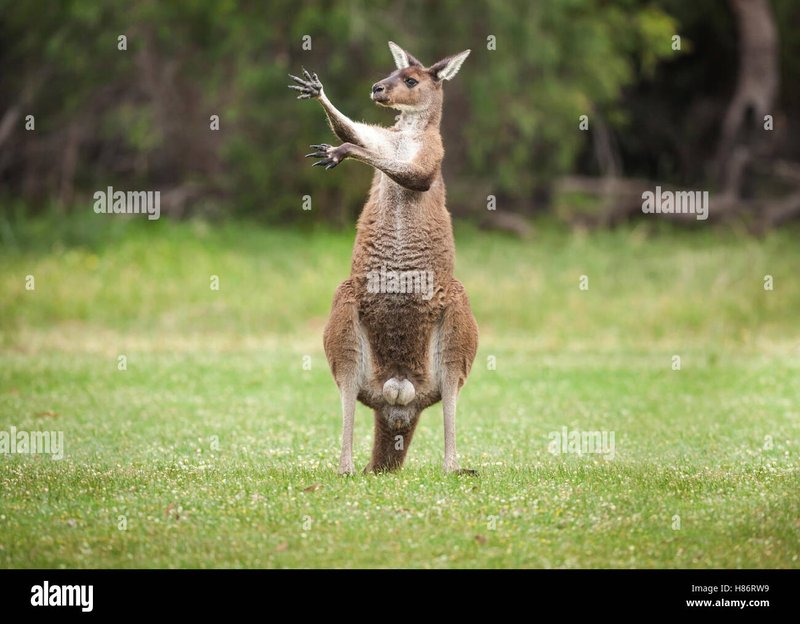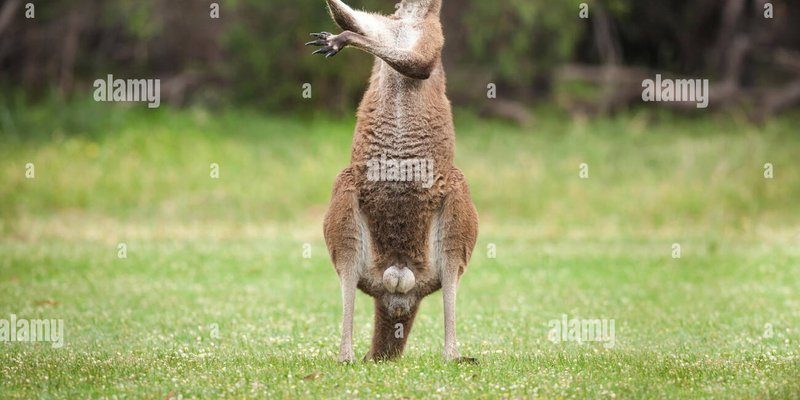
Imagine facing a scorching summer or freezing winter without access to fresh water or food. Sounds stressful, right? Well, the Western Grey Kangaroo has adapted over time to deal with these challenges, making them masters of endurance. In this article, we’ll explore how these kangaroos manage to survive and even flourish in their tough environments, much like a well-prepared camper who knows how to set up a shelter and find food in the wilderness.
Adaptations to Extreme Weather
Western Grey Kangaroos are like little survival experts when it comes to weather extremes. One of their most fascinating adaptations is their ability to regulate body temperature. During the heat of the day, these kangaroos often rest in the shade, staying cool and conserving energy. You might think of them as nature’s air-conditioners, cleverly avoiding heat stress by being smart about their movements.
When the temperature drops, these kangaroos have a knack for staying warm. They curl up, tucking their limbs in close, which helps conserve heat. It’s a bit like wrapping yourself in a cozy blanket when the chilly winds blow. Plus, their thick fur provides insulation, keeping them snug on those cold nights. So, while many animals might struggle, the Western Grey Kangaroo has mastered the art of weathering nature’s storms.
Water Conservation Strategies
Water is crucial for survival, and Western Grey Kangaroos have developed several clever ways to conserve it. For starters, they are incredibly efficient at using the water they consume. Their kidneys are designed to minimize water loss, allowing them to go for extended periods without drinking. It’s kind of like how a smart traveler packs enough supplies to last them for a long trip.
In the wild, they often get moisture from the vegetation they eat. Fresh grass and leaves contain water, providing them with hydration without needing to sip from a stream. This is vital, especially during droughts when water sources are scarce. By being adept at water conservation, these kangaroos can thrive even when conditions are less than ideal.
Flexible Feeding Habits
Let’s talk about food. Western Grey Kangaroos are primarily herbivores, which means they eat plants. But what’s really fascinating is their flexibility regarding their diet. They aren’t picky eaters. Instead, they munch on whatever is available, which is a smart survival tactic.
Their diet mainly consists of grasses, but they can also eat leaves, fruits, and even tree bark if they need to. This adaptability allows them to switch up their meals based on what’s in season or what’s actually out there in their environment. Imagine being open to trying a new dish whenever your favorite restaurant runs out of your go-to meal—it’s all about making the best of what you have.
Social Structures and Group Living
Another fascinating aspect of Western Grey Kangaroo survival is their social structure. While they can often be seen alone, these kangaroos are also known to form groups called “mobs.” You might wonder, why is this important? Well, living in groups offers several benefits. For one, there’s safety in numbers. They can alert each other to potential threats like predators.
Additionally, mob living aids in finding food and water. When they forage together, they increase their chances of discovering new feeding areas or sources of hydration. It’s a lot like going grocery shopping with friends; you might spot a great deal that you wouldn’t have found alone!
Breeding and Reproduction in Tough Times
You might think that harsh conditions would put a damper on breeding, but Western Grey Kangaroos have a unique approach to reproduction. Female kangaroos have the ability to delay the development of their embryos if conditions aren’t favorable. This means they can wait for a better time to give birth, ensuring that their joeys (the baby kangaroos) have a better chance of survival.
Furthermore, they can nurse more than one joey at a time at different stages of development. This adaptability is crucial during tough times when food is scarce, and resources are limited. It’s a clever strategy that helps maintain their population despite environmental challenges.
Finding Shelter and Staying Safe
Just like us, Western Grey Kangaroos need shelter to protect themselves from harsh weather and predators. They often seek out dense bushes, trees, or rocky outcrops to hide from the elements and avoid danger. Think of it like finding a safe haven when a storm rolls in.
When resting or sleeping, they’ll choose spots that provide some cover. This instinctual behavior not only keeps them safe but also helps them conserve energy. It’s a little reminder that sometimes, taking shelter can be the best way to thrive, allowing them to bounce back when conditions improve.
Conservation Efforts
Despite their impressive survival skills, Western Grey Kangaroos face threats from habitat loss, climate change, and hunting. Conservation efforts are crucial to protect their natural environment. Supporting these initiatives is essential, as they help maintain the delicate balance between humans and wildlife.
Local organizations often promote eco-friendly practices that benefit both the kangaroos and the ecosystems they inhabit. By raising awareness and taking action, we can ensure that future generations will continue to marvel at these incredible creatures and their adaptability.
In conclusion, Western Grey Kangaroos have developed an astonishing array of skills to thrive in harsh environments. From weather adaptations to flexible feeding habits and social structures, they have shown us the power of resilience. As we learn more about these fascinating animals, we can appreciate their place in the ecosystem and the importance of protecting their habitats. Remember, every little effort counts when it comes to conservation, so let’s keep the conversation going!

